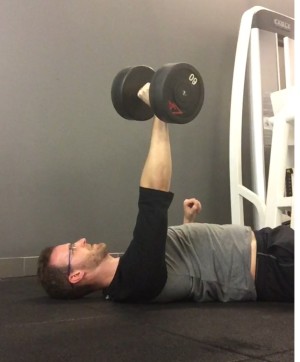This is a guest post from Dianna Scotece, BS Athletic Training, CSCS, NASM. She has 20 years experience in the business.
Over 55? You should be training like an athlete, even if you have little to no athletic experience. Not only do athletes take their wokouts seriously, but their entire year is programmed with a specific end in mind. Throughout the year strength, power, endurance, and agility are addressed. Athletes train so that they perform optimally and prevent injuries. These are all great reasons to train if you are over 55.
Before the official start of the academic year and fall semester, thousands of athletes will gather, usually in a large arena, to undergo their annual health screening. A clean bill of health must be obtained before their power, strength, agility, or skill is put to the test in practice or in the gym. If any athlete receives a ‘red flag’ in any of the screening areas then they must see the team doctore for further tests. This is necessary for determing if their workouts must be modified or restricted.
If you are over 55 and starting training, your journey should be similar. Always start with a visit to your doctor. I have many clients who hate this step. They see it as a road block to starting their fitness routine. Seriously, your trainer is not a doctor or physical therapist. In the long run you will have a more successful and efficient exercise program if you ahve started with this first step. After all, even 20 year old athletes do it.
Once that is out of the way, you can get in to the nitty gritty. I understand you probably are not training to stop a defensive player running at you at full speed. You may also not be shooting for first place in the Ironman. You might, however, be aiming to pick up your grandchild, carry your groceries, pick up a suitcase, or move a piece of furniture. These things can become harder because as we age we lose muscle mass due to inactivity and the bodies natural break down. The great news is that aging does not impair the musculoskeletal system from adapting to resistance training. This means that you should incorporate strength training into your life, and I mean real strength. Something that you can handle for only 6-10 repititions. Remember that strength is relative. For some of you this means a 100 pound deadlift and for others it may mean just 10 pounds. You don’t have to look like Arnold Schwarzenegger, but you do need to slow the rate of muscle atrophy.
Besides strength training, you’ll need some agility as well. Have you ever had to stop a child from running into the street? Have you ever had to quickly run across the intersection to avoid being hit by a car? What about trying to catch yourself to prevent a fall if you trip? If you have, then you have experienced what fast twitch muscle fibers, coordination, balance, speed, and reflexes can do for you. You need to train these things because they detoriate quickly. Fast twitch muscle fibers, which help give you speed and explosive power, atrophy faster than other types so they are always in need of some work. Coordination, balance, and reflexes should all be drilled as well to help you implement them when you need it. I wll never forget how one day I was walking with a client who was 85 years old. She is 4’10” and uses a cane. I was shocked to see how many people did not move out of her way on the street. Several times she had to step to the side quickly to avoided being run over. Ever since then I have taken a closer look at the skill sets of my older clients. I love bringing out the agility ladder and running lateral drills. Whether they are 90 or 55, they all benefit from these skills.
So what is the difference between those of us over 55 and those in their 20’s? In my opinion nothing. There are some stereotypes about older people and training older people that need to be taken out of the dark ages. As long as you are training within a reasonable realm of individual health and limitations there is no reason why the older clients program should be taken any less seriously than a 20 year old’s. Get the person to fire up their mind and body and you will add to their quality of life.


Pingback: Myth Busters: Common Fallacies of Strength Training Debunked | Working Lines: Cross-Training for Professional Dancers October 26, 2013
[…] I don’t think so! I have trained people in their 70s and a few of my talented colleagues have trained dedicated people into their 90s. For these seniors (and for everyone else, too) strength training essential. If you appropriately continue to challenge your body, strengthen your muscles to support joints, and practice balance among other things, you can continue to promote cell turnover and muscle growth therefore increasing your ability to stay active. In this way, you can prevent your world from getting smaller, get around with relative easy and generally feel better. For a great article on strength training for seniors by my talented colleague, Dianna, click HERE. […]